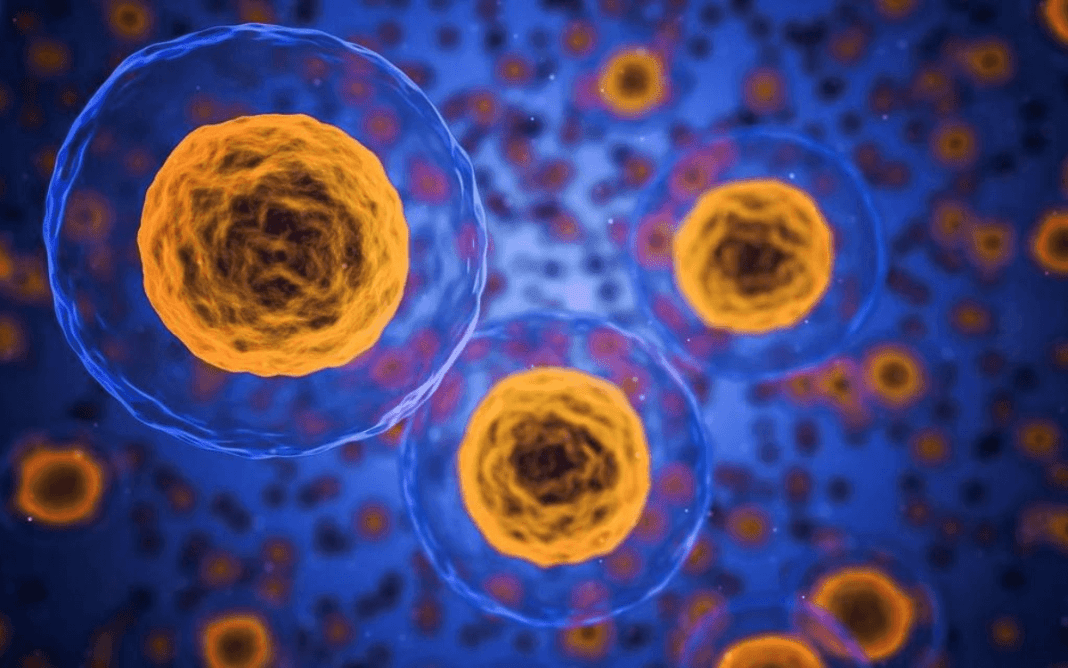What is Lung Cancer? Symptoms, Factors, Diagnosis, Treatment, and Prevention That All You Need to Know.
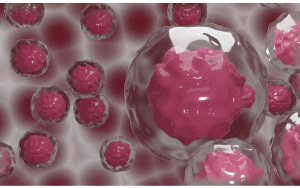 Introduction
Introduction
Lung cancer is a major health concern. In the 21st century. It’s responsible for the vast majority of cancer deaths worldwide and is on the rise. Since it begins in the lungs, early detection of lung cancer is notoriously challenging.
Cigarette smoking and environmental carcinogens, such as secondhand smoke, are significant causes of lung cancer. However, early detection and treatment of lung cancer may improve survival rates.
The most significant preventable risk factor is smoking. They are developing lung cancer. According to the American Cancer Society, tobacco usage accounts for 80% of lung cancer incidences. Being around smokers is also a risk factor for developing lung cancer.
Asbestos, radon, and diesel exhaust are all known carcinogens that can cause lung cancer. Lung cancer is more common in the construction, mining, and manufacturing industries than in the general population.
Patients have a higher chance of positive outcomes. It is essential to detect and treat lung cancer early. Early detection of cancer enhances the possibility that it can be successfully treated.
Sputum cytology and low-dose computed tomography (LDCT) are two methods that can be used for lung cancer screening.
Low-dose computed tomography (LDCT) scans should be performed on those at high risk for developing lung cancer, such as current and former smokers. Various treatment methods may be considered depending on the stage and kind of lung cancer.
Surgical intervention, radiation therapy, and chemotherapeutic drugs are the usual cornerstones of care. Researchers are working to develop targeted medicines and immunotherapies for lung cancer to use in conjunction with current treatments.
In modern times, lung cancer is the foremost cause of cancer-related deaths, making it a significant concern for public health. Smoking and exposure to secondhand smoke and certain chemicals increase the probability of developing lung cancer.
With early detection and treatment, lung cancer survival rates can improve considerably.
By raising awareness about the risks of lung cancer and the significance of early detection and treatment, we can reduce the fatalities caused by this disease.
Can You Explain What Cancer Is?
Abnormal cell growth defines a group of disorders known as cancer… The unchecked multiplication of abnormal cells may then move to other body parts (metastasize). Malignant tumors, in contrast, frequently spread to other parts of the body. Symptoms may include:
- A lump.
- Abnormal bleeding.
- A persistent cough.
- Rapid and extreme weight loss.
- A change in bowel habits.
What is Lung Cancer, Exactly?
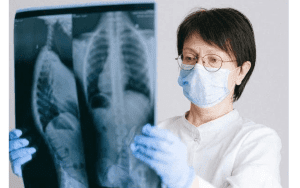

In the US, lung cancer ranks third in incidence rate. The cause is due to the rapid multiplication of malignant lung cells.
Treatment options include surgical procedures, chemotherapy, immunotherapy, radiation therapy, and targeted drugs—those at a high-risk need to get checked out. As treatment options have advanced, the death rate from lung cancer has plummeted.
Lung cancer originates in the uncontrolled expansion of cancer cells. Your cells duplicate themselves as part of a normal biological process. They usually stop reproducing when they should, but sometimes they acquire alterations (mutations) that allow them to do so.
Tumors develop when damaged cells replicate uncontrollably, disrupting the regular functioning of your body’s organs.
The bronchi, bronchioles, and alveoli are the sites of origin for lung cancer. It is common to use the original names for cancers that have spread to the lungs (though your doctor may use the term “metastatic to the lungs cancer”).
What Types of Lung Cancer Are There?
There are various types of lung cancer. The terms “lung cancer” and “small cell lung cancer” are the most commonly used to describe the two most common types.
NSCLC Stands For Non-Small Cell Lung Cancer.
Most cases in this area are made up of lung cancer. NSCLC or non-small cell lung cancer. It’s responsible for more than 80% of all lung cancer cases. Adenocarcinoma and squamous cell carcinoma are two of the most common kinds.
There are other subtypes of NSCLC, the less frequent ones being adenosquamous and sarcomatoid carcinoma.
Non-small cell malignancies account for most lung cancer cases (about 85%). Non-small cell tumours can be broken down into six categories.
Cellular squamous adenocarcinoma: Cigarette smoke is a significant contributor to this disease. Usually, you may find these cells in the main bronchi or trachea.
Anyone who has ever smoked is at risk of developing adenocarcinoma. Women and younger patients are disproportionately affected.
Adenocarcinoma in situ is a cancer that can look like a lung infection initially.
Adenosquamous carcinoma is an uncommon subtype of aggressive squamous cell cancer.
Large cell carcinoma type of lung cancer. The growth can occur in any region of the body. Including the lungs, and spreads rapidly once it does.
Malignant and immature cancer cells are what make up an undifferentiated carcinoma.
Lung Tumours, Small Cell and Otherwise: SCLC
How ‘Helicopter’ Parents Cause the Mental Health Crisis in Today’s Young Generation?
There are three distinct forms of small-cell lung cancer.
Tobacco use is a significant contributor to small cell carcinoma, but fortunately, this form of cancer is highly treatable.
SCLC develops more rapidly than NSCLC and is more difficult to cure. A tiny lung tumour that has migrated to other organs is a common finding. Small cell lung cancer (SCLC) has varying types.
The two most prevalent forms of lung cancer are arhat cell carcinoma, also called small cell carcinoma, which requires immediate medical attention. Carcinoma and combined small cell carcinoma.
Cancer of the lung containing cells with features of both small and non-small cell types is called mixed small cell/large cell carcinoma.
Multiple stages of mixed small-cell carcinoma can occur when small-cell lung cancer develops with squamous and secreting cells.
Neuroendocrine tumours with several large cells: A malignant growth with molecular hallmarks of small-cell lung cancer.
NSCLC is the most common category for lung cancer cases, whereas NSCLC stands for non-small cell lung cancer. It’s responsible for more than 80% of all lung cancer cases.
Adenocarcinoma and squamous cell carcinoma are two of the most common kinds. There are other subtypes of NSCLC, the less frequent ones being adenosquamous and sarcomatoid carcinoma.
Lung Cancers of Other Types
Lung cancer isn’t the only sort of cancer that can begin in the chest; lymphomas, sarcomas, and pleural mesothelioma can also spread from the lining of the lungs. Different from conventional lung cancer, these are typically not even called cancer.
Stages


The extent to which cancer has metastasized and its seriousness are described by its “stage.” Professionals in the medical field and patients alike might benefit from staging when determining the best course of treatment.
What Are The Different Lung Cancer Stages?
Cancer is often staged according to the size of the primary tumor, the depth to which it has progressed into neighboring tissue, and the presence or absence of lymph nodes and distant organ metastases. Staging procedures vary by cancer kind.
Staging
There are many possible configurations of size and distribution for each step. In Stage III cancer, for example, the primary tumor may be smaller than in Stage II, but the disease has progressed further due to other reasons. As a rule, lung cancer is staged as follows:
stage 0
If the cancer is only in the bronchial or pleural lining, it is at stage 0 (in situ). It is localized to one portion of the lung and has not spread to other areas.
Stage I.
The cancer has not moved beyond the lungs, as in Stage I.
Stage II
Multiple instances have been observed. Tumors present in the same area. In the lung lobe, cancer has progressed to lymph nodes within the lung, or Stage II disease is more advanced than Stage I disease.
Stage III
Tumor size more significant than that seen in Stage II, metastasis to lymph nodes or adjacent structures, or several tumors in distinct lobes of the same lung constitutes Stage III lung cancer.
Stage IV.
The cancer appears to have spread to other organs or reached the lungs, pleural, or pericardial fluid. This is Stage IV.
Learn How To Keep Your Students Engaged?
Comparing a Small Stage to a Huge one
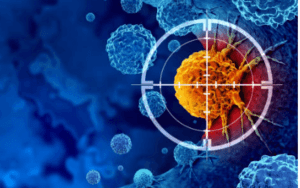

A patient with small cell lung cancer may hear the term “limited stage” or “extensive stage” used in addition to the more common “stages I through IV” terminology. This depends on whether or not a single radiation field can be used to treat the area.
Confined space One lung is affected by SCLC, and cancer may also spread to lymph nodes in the mid-chest or above the collarbone on the same side.
Profound setting Squamous cell lung cancer (SCLC) has spread from its original location to other sections of the same or a different lung. It’s essential to note that the lymph nodes. You could come across a different viewpoint. Body to be of significance. Also, experience the same effects.
The Most Elementary Sort of Staging Entails:
When the cancer is localized, it has not spread beyond that place;
when it is regional, it has spread to neighboring tissues or lymph nodes; when it is systemic, it has migrated to other body sections.
The TNM classification scheme is analogous. Medical specialists evaluate the tumor to determine its size if it has.
The tumor is less than 7 centimeters in diameter. Still, it may have spread to other organs or lymph nodes. A thorough understanding of lung cancer stages is crucial;
mainly, healthcare providers use different methods to determine the Stage of lung cancer, depending on whether it’s non-small cell lung cancer (NSCLC) or small cell lung cancer (SCLC).
For NSCLC, stages are determined based on the tumor’s size and spread, ranging from abnormal cells in the top layers of airway cells (Stage 0) to cancer that has spread to other parts of the body (Stage 4).
It’s crucial to ascertain whether cancer can spread into other areas or parts of the body, specifically the lymph nodes. Depending on whether cancer has spread within or outside the lungs, SCLC is categorized into limited and extensive stages.
In the little Stage, cancer only affects one side of the chest, while in the vast Stage, it has spread beyond one side of the chest and may affect other parts of the body.
It should be emphasized that roughly 33% of people do not alter their behavior in this regard… SCLC is diagnosed when the cancer is in the limited Stage, and radiation therapy can be used to treat it effectively.
The ACS notes that around two-thirds of people with SCLC learn they have it when it is already in the extensive Stage.
Survival Rates


Below, we outline the chances of surviving for five years or longer after receiving a lung cancer diagnosis, as estimated by the ACS.
The percentages reflect the events of a person staying with lung cancer compared with the options of staying without the condition.
The New World of Semipermanent Makeup and Beauty
What is metastatic lung cancer?
Metastatic lung cancer starts in one lung but spreads to the other lung or other organs.
Metastatic lung cancer is more challenging to treat than cancer that hasn’t spread outside.
It’s important to note that lung is worth noting that cancer ranks as the third most frequently occurring type of cancer in the United States.
with health systems reporting more than 200,000 new cases every year.
Signs and Symptoms
How may its signs and symptoms be identified?
Remember that it’s essential to pay attention to the signs. Lung cancer can be misleading and may overlap with those of other ailments—those of less severe illnesses.
Symptoms may appear early in some persons, while in others, they may not appear until the disease is advanced.
Those affected may experience a single or a combination of the following signs and symptoms.
- An unrelenting cough that refuses to improve.
- The inability to breathe easily is known as dyspnea.
- Chest pain/discomfort
- Wheezing.
- Coughing up blood, also known as hemoptysis.
- Hoarseness.
- Disposal of hunger.
- Rapid and unexplained weight loss.
- Inexplicable inability to sleep.
- A pain has appeared in my shoulder.
- Facial, neck, and upper-body puffiness are classic superior vena cava syndrome symptoms.
- A drooping eyelid characterizes Horner’s syndrome. One eye has a smaller pupil, and the face appears asymmetrical on one side.
When should people be concerned that they may have lung cancer?
Recurring symptoms, such as a cough or pneumonia despite therapy, might be an early indicator of lung cancer. Coughing that doesn’t go away or is worsening, shortness of breath, chest pain, hoarseness, or sudden, unexplained weight loss are all signs of lung cancer.
These symptoms typically don’t show up until later stages of the disease but can present early (in locations I or II) depending on which part of the lung cancer started. For this reason, those at a greater risk of developing lung cancer should undergo testing.
How long does it take before lung cancer is discovered?
Having cancer in your body may go undetected for years. At the beginning of lung cancer, symptoms are unusual.
Amazon is Still Trying to Crack the Physical Grocery Code.
What You Might Not Expect: Lung Cancer Symptoms


The wide range of less obvious warning signs for lung cancer might surprise you. If you had these symptoms, you might not immediately consider lung cancer because they seem unrelated to the lungs.
Pain in the Upper Extremities.
- The Pancoast tumor is a type of lung cancer that primarily affects the upper lobes of the lungs.
- The lungs aren’t the only place these tumors can travel; the ribs, spine, nerves, and blood arteries are also at risk.
- These tumors generally cause upper back, shoulders, and arms discomfort.
- One potential adverse effect is a feeling of numbness or tingling in the hands.
-
Vision Problems.
- Ocular symptoms have been linked to Pancoast tumors, the source of arm and shoulder pain.
- Some individuals may notice a decrease in sweating on one side of their face, drooping eyelids, and constricted pupils in one eye.
- Horner Syndrome is a group of symptoms that can affect the eyes and is associated with a higher risk of developing lung cancer.
Balance Issues.
- Loss of balance or shakiness is a possible symptom of lung cancer.
- Because it returns blood from the upper body and extremities to the heart, the superior vena cava (SVC) may be located near a tumor.
- When a tumor expands, it might cause blood to pool in this vein, which can cause dizziness and imbalance.
- Anaemia is common in people with lung cancer and can make them weak and vulnerable.
Headache
- Head pain could result from a tumor in the superior vena cava, the blood vessel responsible for transporting blood from the upper body back to the heart.
- Severe headaches and even loss of consciousness have been linked to blood pooling in this vein.
- High blood calcium levels, typically manifest as headaches, have been related to as much as 20% of lung cancers.
Piles Form in the Neck, Upper Arms, and Chest.
- The skin may develop a bluish-red tone due to Superior Vena Cava Syndrome. Tumors can pressure the superior vena cava vein and the lymph nodes nearby.
- The affected area will appear swollen due to blood pooling in the veins.
Variations in Body Mass Index.
- People with lung cancer can gain or lose weight.
- The growth of small-cell lung cancer tumors can trigger the body to release ACTH.
- In this case, the body uses ACTH to make cortisol.
- The stress hormone cortisol can cause water retention and weight gain.
- However, elevated calcium levels are often accompanied by weight loss in some patients with this illness.
A Clot Forms in the Blood.
- It is more frequent for people with lung cancer to have blood clots in the lungs, arms, or legs.
- Inflammatory substances may contribute to the development of cancer, according to researchers.
- Because of the swelling, blood clots form.
Bones That Are Sore and Crackling.
What is Bipolar II Depression? Psychopharmacologic Treatment of Bipolar II Depression
- Some people are wracked with a bone-aching weakness that permeates their entire being. Sometimes it could be clearer whether your pain comes from your bones or muscles.
- If your discomfort increases when you move, at night, or when you’re resting on your back, it’s probably coming from your bones.
- Cancer spreading to the bones may cause pain in the back, pelvis, or large bones of the arms and legs.
She Clubbed Chubbier Digits.
- The finger joints are abnormally rounded.
- The skin of your fingernail may be glossy.
- Outward spooning of the fingernail can be seen.
- Clubbed fingers are associated with an increased risk of lung cancer in 80% of cases.
He Needs Help digesting Food.
Hypercalcemia, or high blood calcium levels, affects 10%-20% of people with lung cancer. Symptoms of high blood calcium levels include the inability to urinate, nausea, and abdominal pain.
Urinary Frequency and Urgency, and Extreme Thirst.
Abnormally high blood calcium levels, or hypercalcemia Overindulging in this substance can adversely affect your digestive system and cause you to urinate and sweat excessively.
Lack of Strength or Energy.
- Lung cancer can impair lung function, which can lead to anemia.
- Due to cancer’s draining effects, the host has less energy to deal with weariness and maintain their usual routine.
- Extreme tiredness may not necessarily point to lung cancer.
- However, it’s still vital to bring it up with your doctor so they can take it into account along with everything else you’re experiencing.
Problems Related to the Heart.
- An elevated heart rate or arrhythmia has been linked to anemia and excessive calcium levels.
- Hypercalcemia can cause fatal side effects, including heart attacks and comas.
- Patients with severe anemia may experience chest pain and breathing difficulties.
These Days, Quitting Smoking is a Breeze.
- Those who can abruptly give up smoking may have an advanced form of lung cancer.
- Experts believe this may be the case because lung cancer cells may make developing a tolerance to nicotine more challenging.
- Breast hypertrophy in men.
- Although less common than small-cell lung cancer, large-cell lung cancer can also disturb a man’s hormone balance and cause breast growth and pain.
Dementia, Stress, and the Blues.
The Reality of Abusers, Abuse, and What to Do?
- Having lung cancer is linked to a higher likelihood of requiring therapy for mental health issues, but the reasons for this are unclear.
- Serious concerns are warranted when mental health issues arise alongside other symptoms.
- While the appearance of even one of these symptoms is not conclusive evidence of lung cancer, it should raise red flags.
- Your current health situation warrants a visit to your primary care physician.
Factors
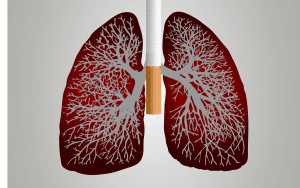

Why does it occur in the lungs?
Uncontrollable cell growth is the root cause of lung cancer.
While dividing cells into new ones usually occurs, all cells have a built-in off switch that prevents them from dividing (senescence) or triggers their death (apoptosis) when necessary.
When a cell divides an odd number of times or undergoes an odd number of changes (mutations), the off switch is triggered.
Cancer cells were once healthy cells in the body, but they mutated so that their “off” switch was no longer functional.
Unchecked cell growth interferes with your body’s healthy cells.
Cancer cells can travel to other organs and spread the disease if they enter the lymphatic system or the bloodstream.
Tobacco use increases your chance of cell damage, which can lead to lung cancer; however, the exact origin of these alterations that lead to cancer in some people but not others remains unknown.
Cancer of the Lungs Risks Factors.
Smoking tobacco in any form—cigarettes, cigars, or pipes—is the most common and leading risk factor for developing lung cancer, though it is only one of many.
According to experts, eighty percent of lung cancer fatalities are attributed to smoking.
Smoking
Lung cancer is most commonly brought on by a lifetime of cigarette smoking.
Cigarette smoking contributes to 80%-90% of all cases of lung cancer and its related fatalities in the United States.
Both cigarette smoking and pipe smoking pose serious health risks to the lungs.
Cigarette smoke contains over 7,000 compounds, many of which have adverse health effects.
There is poison in several of them.
At least seventy have been linked to tumour formation in either humans or animals.
Regular smokers have a 15-30 fold higher risk of developing lung cancer than nonsmokers.
The chance of acquiring lung cancer is increased even with light or occasional smoking.
Daily cigarette consumption and duration are directly correlated with elevated risk.
Prolonged Contact With Environmental Tobacco Smoke
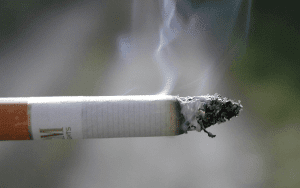

It is well-established that inhaling the smoke of someone else’s combusted cigarette, pipe, or cigar can increase your risk of developing cancer.
Elon Musk; Short Life Story of the Boy Who Change The World
The effects of exposure to secondhand smoke are equivalent to those of smoking.
One-fourth of nonsmokers in the United States, including 14 million youngsters, were exposed to secondhand smoke in 2013 and 2014.
How Vulnerable Are You to Radon?
When it comes to the incidence of lung cancer in the US, radon is a close second.
The radioactive gas radon is pervasive in the earth’s crust, subsoil, and water supply.
It can’t be felt or seen.
If radon seeps through a crack in the building’s foundation, it can accumulate on the inside.
Radon is a carcinogen that can be found in the air and is dangerous to breathe at high concentrations.
Long-term radon exposure can be a significant cause of lung cancer.
(EPA) of the United States estimates that 21,000 annual instances of lung cancer can be directly linked to radon.
Exposure to radon increases smokers’ risk of lung cancer compared to nonsmokers.
The Environmental Protection Agency reports that adults who have never smoked cigarettes account for more than 10% of radon-related lung cancer deaths.
Nearly one in fifteen homes in the United States has radon levels that are too high.
If you suspect that the radon level in your house is too high, you should find out how to test for it and take measures to reduce it.
Substitute Components
Workplace contaminants include but are not limited to, asbestos, arsenic, diesel exhaust, and certain forms of silica and chromium.
Several of these substances significantly enhance the chance of getting lung cancer in smokers.
Those places with high levels of air pollution may have a maximized probability of developing lung cancer.
Personal or Family History of Lung Cancer
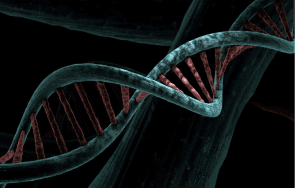

If a person with lung cancer survives and continues to smoke, they dramatically increase their risk of acquiring a second lung cancer.
Your chance of having lung cancer may increase if a parent, sibling, or child in your family has already been diagnosed.
Since they are exposed to radon and other toxins in the same environment as smokers, they may have the same risk of acquiring lung cancer.
Become a Fashion Designer: 10 Online Fashion Design Courses to Boost Your Skills
Radiation
People who have experienced radiation therapy and scanning the chest for cancer are more likely to get lung cancer later in life.
Diets
Researchers are investigating many different diets and dietary supplements for their possible effects on the risk of developing lung cancer.
We still need more research and studies to find out about the world.
Smokers taking beta-carotene supplements are at an increased risk of developing lung cancer.
Pollution
Arsenic and radon, both common contaminants of groundwater and drinking water, have been related to an increased risk of lung cancer.
Additional Danger Causes Can Be:
- Being subjected to passive smoking.
- Air pollution, radon, asbestos, uranium, diesel exhaust, silica, coal products, and other harmful compounds.
- I have previously received radiation therapy to the chest (for diseases like breast cancer or lymphoma, for instance).
- Lung cancer running in your family means.
Can Vaping Cause Lung Cancer?
Vaping (using a device to inhale a mist of nicotine and flavoring) exposes the user to various chemicals, some known to cause cancer.
Its effects in the long term of vaping are not yet fully understood, although scientists agree that it may harm the lungs.
Although tobacco use is strongly associated with an increased risk of lung cancer, as much as 20% of cases are found among nonsmokers.
This is why reporting any worrying symptoms to your doctor is crucial.
Test And Diagnosis
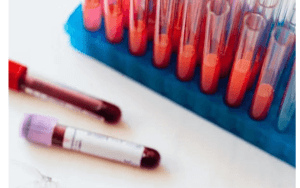

How do doctors identify lung cancer?
Chiswick Art School Summer Term 2023
Multiple tests and examinations could be necessary to diagnose lung cancer. During a first visit to the doctor, you should expect to answer questions about your health, have your heart and lungs checked, and possibly undergo other physical examination procedures.
Due to the general nature of lung cancer symptoms, your doctor may start by ordering a blood sample and a lung X-ray to rule out more common ailments.
If your physician diagnoses lung cancer, further testing, such as a CT scan and a biopsy, will be performed to confirm the diagnosis.
The Spread of cancer can be detected with a PET/CT scan, and the best course of therapy can be determined with a biopsy.
Can a chest X-ray detect lung cancer?
When detecting lung malignancies early on, CT scans are superior to X-rays. A small tumor may be hidden from view on an X-ray by neighboring tissue or bone (like the ribs).
Although an X-ray cannot detect lung cancer, it can aid in your doctor’s diagnosis of whether or not there whether there is anything suspicious that needs additional examination.
How Will the Lung Cancer be Diagnosed?
Blood tests, imaging, and biopsies of fluid or tissue may all be procedures your doctor orders or performs on you.
To Check Blood
While blood tests cannot be used to diagnose cancer, they can be used to evaluate the health of your internal organs and other systems.
Imaging
Your doctor can see lung changes on X-rays and chest CT scans. After a cancer diagnosis or when a suspicious finding on a CT scan needs to be evaluated, PET/CT scans are often performed to check for metastases.
Best 6 Speakers for Spring 2023 House Parties
Biopsy
Your doctor can do various tests and procedures to examine your chest and determine what’s wrong closely.
During the same visits, your doctor may remove tissue or fluid samples (biopsy) to discuss further and identify your type of cancer.
DNA can be analyzed for mutations that may modify the course of treatment.
Among the diagnostic and investigative methods used for lung cancer are:
Biopsy with a needle. Your healthcare professional will use a hand to extract fluid or tissue samples during this treatment.
A bronchoscopy, thoracoscopy, or VATS may be performed. Your doctor will use these techniques to examine your lungs and take tissue samples for analysis.
Thoracentesis.
This method collects a sample of the pleural fluid around your lungs for diagnostic purposes.
Ultrasound of the esophagus or bronchi is performed through an endoscope. These methods allow a doctor to examine lymph nodes and take samples for analysis.
Medioscopy or Mediastinal Incision.
A healthcare provider will utilize these methods to examine and collect tissue samples from your mediastinum.
Genomic Analysis
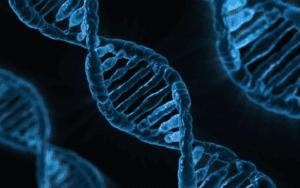

Your doctor may order genetic testing on a biopsy specimen to identify alterations (mutations) in genes that specific medications can target.
KRAS, EGFR, ALK, ROS1, BRAF, RET, MET, HER2, and NTRK are among the genes that may have alterations that can be targeted in NSCLC.
4 Ways That Break Sibling’s Relationship, and 4 Reasons Reconciliation Is So Hard
Control And Medication
How do doctors deal with lung cancer?
Lung cancer therapies aim to either eradicate the disease entirely or significantly reduce its progression.
Cancer cells can be eliminated, destroyed, or prevented from multiplying thanks to treatment, and the immune system can be trained to recognize and destroy cancer cells on its own.
Reducing symptoms and alleviating pain is another goal of a particular therapy.
Many factors, including the specific form of the lung, the type, stage, and extent of cancer you have, will influence the course of treatment recommended for you.
Following a description of the various treatment modalities available for NSCLC, a stage-by-stage breakdown of typical therapy protocols is provided. Treatment for your overall cancer care plan.
- Surgery
- Radiation treatment
- Chemotherapy
- Specific treatment
- Immunotherapy
- The cancer experience: body, mind, and community
- What to do based on the NSCLC stage
- Probability of relapse after remission
- When treatment fails
Surgery
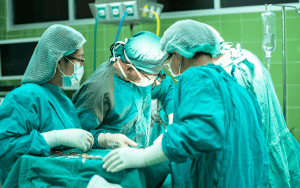

Surgery aims to remove the entire tumor in the lung and any lymph nodes in the chest that may be close by. A healthy lung tissue border or margin must be released alongside the tumor.
When an expert diagnoses the lung or a piece of a lung removed by the surgeon, a “negative margin” indicates that no cancer was identified in the healthy tissue surrounding the tumor.
An oncologist who uses surgical procedures to treat cancer. Lung cancer surgery requires the expertise of a thoracic surgeon.
According to the Scientists and Researchers, Which Fat is The Best for Brain Health?
Non-small cell lung cancer surgical options include:
Lobectomy. There are 5 lung lobes: 3 on the right and 2 on the left. The surgical removal of a complete lobe of lung tissue is known as a lobectomy.
Even when the lung tumor is tiny, this surgery is an essential and influential option. Less invasive surgical procedures for tumors measuring 2 centimeters or less are currently being tested in clinical studies.
Wedge excision. If the tumor is too large to remove the entire lung lobe, the surgeon can cut the unhealthy tissue around it.
Segmentectomy. This procedure can eliminate the cancer when a complete lung lobe removal is not an option. A segmentectomy is a surgical procedure removing the affected lung area.
A segmentectomy typically involves the removal of more lung tissue and lymph nodes than a wedge resection.
Pneumonectomy. The entire lung may need to be removed if the tumor is near the chest’s middle. Your doctor will consider your heart and lung health before proceeding with a pneumonectomy, which carries more risks than a lobectomy.
Radiation Treatment
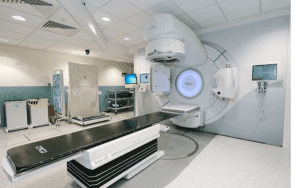

In radiation therapy, affected cells are destroyed by irradiation with X-rays or other high-energy particles.
A radiation oncologist is the doctor you’ll see if your treatment plan includes radiation. When treating cancer with radiation, you should see a radiation oncologist.
External-beam radiation therapy, delivered from a machine outside the body, is the most prevalent form of radiation treatment. Schedules for radiation therapy often involve a predetermined number of sessions spread out over a particular amount of time.
This can range from a few days to a few weeks, depending on the severity of the condition.
Radiation therapy, like surgery, is ineffective against cancer that has spread. Cancer cells in the path of a radiation beam are the only ones to be eliminated by radiation therapy.
The healthy cells it encounters are likewise damaged. Because of this limitation, it can’t be utilized to treat huge regions simultaneously. Intensity-modulated radiation treatment (IMRT) is widely used.
Some patients with tumors may require more advanced forms of radiation therapy, such as stereotactic body radiation therapy (SBRT) or proton therapy.
Patients in the early stages of their disease or those with tumors too small to be removed surgically may benefit from this treatment option.
Why Transgender People Suffering From More Mental Health Issues
Radiation therapy might have side effects.
- Radiation therapy for lung cancer frequently causes patients to feel tired and lose their appetite.
- Side effects from radiation therapy include sore throat and difficulty swallowing if the treatment is administered to the neck or central chest.
- Radiation therapy can cause sunburn-like skin irritation in the treated area.
- After treatment ends, most people feel better quickly.
- A persistent cough,
- fever,
- Or shortness of breath for months or even years after treatment.
- Patients receiving radiation therapy may experience long-lasting side effects from lung irritation or inflammation,
Medication-Based Treatment
Cancer-killing drugs are a possible component of the therapy approach. Treating cancer cells anywhere in the body by administering medication directly into the bloodstream is likely.
It is called systemic therapy when a medicine is administered in this way. Local administration of treatment involves placing or keeping medication near the cancer site.
Medical oncologists are cancer therapy experts who typically recommend this course of action.
Medications are typically administered by having an intravenous (IV) tube inserted into a vein or by having the patient take a pill or capsule. Inquire about proper storage and handling instructions for any oral drugs prescribed to you.
Medications used to treat non-small cell lung cancer include:
- Chemotherapy
- Specific treatment
- Immunotherapy
We’ll go into greater depth about each of these treatment options below. Medication can be administered to a patient at a time or in a combination. They may also be used with other therapies, such as surgery and/or radiation.
Chemotherapy


Chemotherapy uses medications to kill cancer cells, typically by preventing them from thriving and multiplying. For those with advanced lung cancer, it has been demonstrated to increase survival time and quality of life.
A chemotherapy regimen, or schedule, is often defined by the number of cycles administered during a specific time frame.
For example, whether you have adenocarcinoma or squamous cell carcinoma will impact the chemotherapy medications your doctor recommends.
Treatment with adjuvant chemotherapy following surgery is often administered for a shorter duration (four cycles) than in stage IV lung cancer.
Agent combinations of two or three medications or a single agent administered alone are common in lung cancer treatment.
Don’t Ban ChatGPT in Schools. Teach With It.
Medication frequently used today includes:
- Generic versions of drugs like carboplatin
- Cisplatin is a generic medication used to treat cancer.
- Taxotere (docetaxel)
- Generic versions of etoposide are now on the market.
- (Gemzar) gemcitabine
- Abraxane (nab-paclitaxel)
- Taxol (paclitaxel)
- Alizetib (Pemetrexed)
- Nabilone (Vinorelbine)
Specific Treatment
Specific genes, proteins, or the surrounding tissue milieu that fosters cancer growth and survival are the targets of targeted therapies. This therapy inhibits cancer cell multiplication and metastasis while minimizing effects on healthy tissue.
Tumors can feed on a wide variety of cells. The optimum treatment for your cancer will depend on its genes, proteins, and other factors, which can be determined through tests your healthcare professional may order.
Abnormal proteins are over-represented in the cells of several types of lung cancer. When possible, this aids doctors in matching patients with the most beneficial treatment.
In addition, new information regarding molecular targets and related therapies is being uncovered through ongoing study. Find out more about the foundations of specialized treatments.
Targeted therapy for NSC lung cancer is evolving fast due to scientific progress. Current clinical studies investigate new targeted medicines. It’s important to discuss all of your treatment options with your healthcare provider.
Immunotherapy
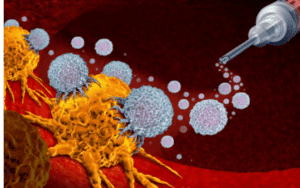

Immunotherapy boosts the immune system’s capacity to attack cancer cells, relying on the body’s natural defenses.
Immunotherapy for NSCLC can involve using a single medicine, a combination of immunotherapy agents, or adding chemotherapy to the treatment plan.
Immunotherapy or immunotherapy combined with chemotherapy is often the first line of treatment for advanced NSCLC when targeted therapies are ineffective.
Immunotherapy employs several strategies for harnessing the body’s immune system in the fight against cancer.
Chemicals that inhibit the PD-1 receptor. The PD-1 pathway is crucial for the immune system suppressing tumor growth.
Some patients with NSCLC have seen a reduction in their tumor size or growth rate after having this pathway inhibited with PD-1 and PD-L1 antibodies.
Kids With These 10 Habits Have ‘Highly Sensitive’ Brains—Why Parenting Experts Say it is Very Good.
The following immunotherapy medicines are licensed for the treatment of NSCLC by blocking this pathway:
- Tecentriq (atezolizumab)
- Imfinzi (durvalumab)
- Libtayo (Cemiplimab-role)
- Opdivo (nivolumab)
- Drugs like pembrolizumab (Keytruda)
Is There Any Way to Stop Lung Cancer?
Sadly, not all cases of lung cancer may be avoided. However, there are actions you may take, such as modifying modifiable risk factors, that may reduce your vulnerability.
Can Preventing Lung Cancer Be Done?


Unfortunately, not all cases of lung cancer are avoidable. However, you can take action to potentially reduce your risk by modifying modifiable risk factors.
Avoid Using Tobacco Products.
The primary strategy to reduce your risk of acquiring lung cancer is not smoking and minimizing exposure to secondhand smoke.
Damaged lung tissue begins to heal if you quit smoking before cancer occurs. Quitting smoking can help people of any age live longer lives and reduce their risk of developing lung cancer. l to Quit Smoking or Smokeless Tobacco, or contact the American Cancer Society at 1-800-227-2345 if you need assistance kicking the habit.
Stay Away From Radon.
Lung cancer is strongly linked to radon exposure. Test your home for radon and get it removed if necessary to lessen your exposure. See Radon and Cancer for further explanation.
Take Precautions to Prevent or Reduce Contact With Carcinogens.
Lung cancer risk factors include smoking, being overweight, and having a family history of the disease. The likelihood of these exposures occurring in the workplace should be minimized.
Be Sure to Eat Well.
Eating a healthy, plant-based diet may also help lower lung cancer risk. Fruits and veggies for a healthy diet have shown promise in reducing the risk of lung cancer in both smokers and nonsmokers.
However, the protective impact of eating more vegetables and fruits would be vastly outweighed by the negative effect of smoking on lung cancer risk.
There is no evidence supplementing with large amounts of vitamins, or vitamin-like medications can reduce lung cancer risk in current or former smokers. Some studies suggest that taking beta-carotene supplements, a kind of vitamin A, may increase the chance of getting lung cancer in these people.
Some cases of lung cancer have no identifiable causes. Currently, we do not have a foolproof method for preventing lung cancer.
For further reading click on blogkingworld.com


